Design Web App In Just In Mind
Start prototyping web and mobile apps
Welcome to Justinmind, the most powerful prototyping and design tool. In this guide, you'll learn some Justinmind basics, including how to create and design screens, add interactions, and collaborate with clients.
Create your first prototype
Sign in to Justinmind and you'll find the Welcome Window. Here, you can choose from several device templates to prototype with, like websites, mobile phones, and tablets. Click on the dropdown below a device to see options and template dimensions to specify.
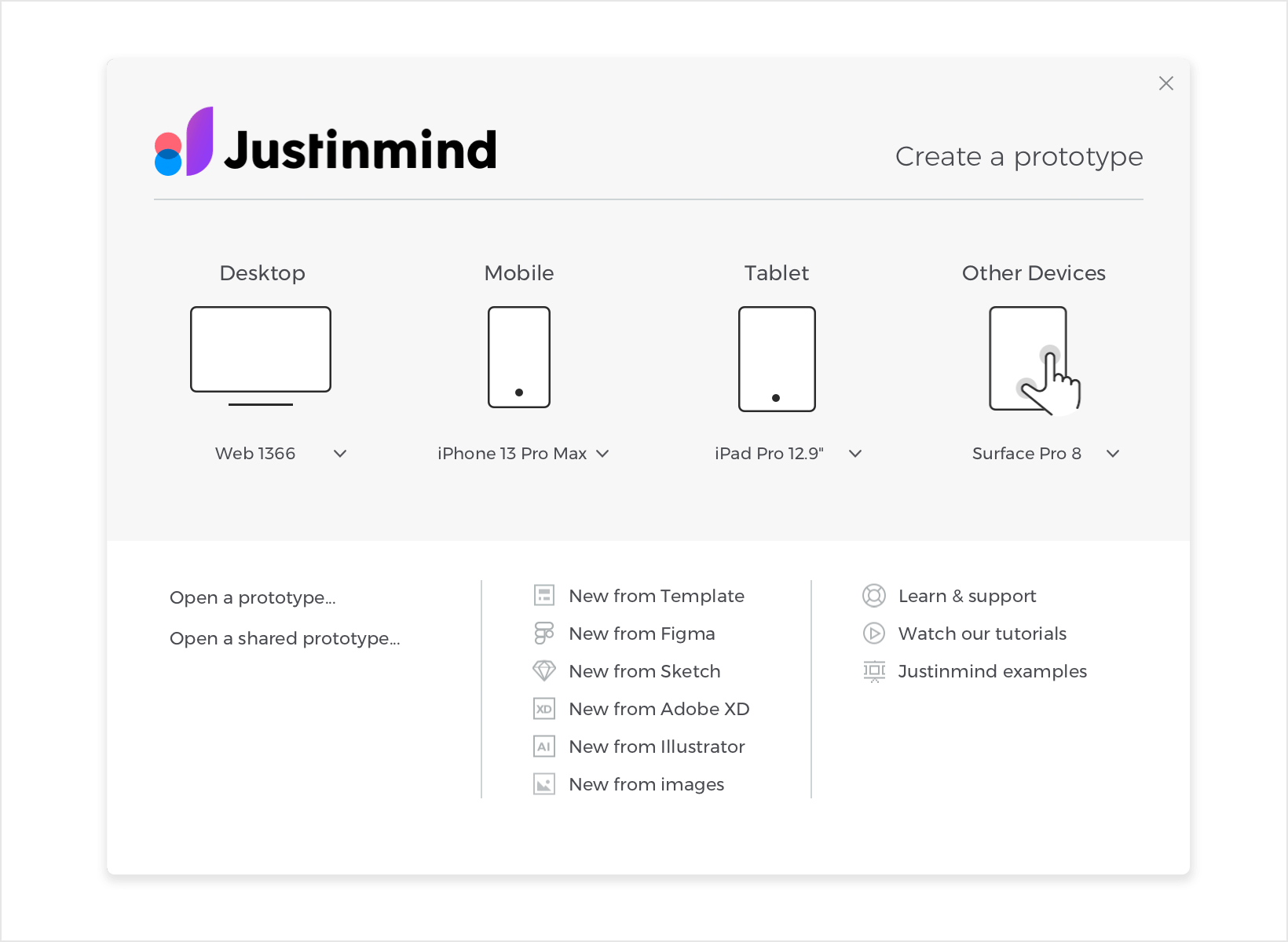
Select a device and click 'New prototype' to start with an empty Canvas.
You can also open a prototype you've already created, or import from other prototyping and design tools, like Sketch, Adobe XD, and Photoshop. Learn more about importing from other tools.
Explore Justinmind User Interface
Justinmind's User Interface is split into different Palettes, which you'll use to create and customize your wireframes:

- Toolbar – select Shapes, Images, and Text elements from the Toolbar and place them on the Canvas to design your prototype.
Click the '+' button in the Toolbar to see other elements to choose, like Dropdowns, Hotspots, and Input Text Fields. Many of these elements and widgets have keyboard shortcuts.
- Screens – view and add new screens in the Screens palette. Screens are similar to Artboards or Frames in other applications. Each screen contains its own Canvas and an entire prototype can contain many different screens, which you can link together using events.
Click the '+' button in this palette to add a new screen.
- Canvas – place elements onto the Canvas to build your designs and wireframes.
- Alignment – align and distribute elements on the Canvas.
- Properties – view and edit an element's styling, position, and visibility during simulation in the Properties palette. Different elements have their own distinct properties you can customize.
- Events – create interactions and turn wireframes into high-fi prototypes in the Events palette. Learn more about events.
- Layers – view and reorder elements' hierarchical positioning on the Canvas. Drag an element to reorder it above or below other elements. Hover over an element or group to see options to hide or show it while editing.
- Libraries – find extra pre-styled elements in the Libraries palette. You'll see different libraries appear here initially depending on which device you're prototyping with. For example, if you're prototyping for an Android phone, you'll find Android components displayed here by default.
Click the 'More libraries' text link to find other UI libraries to use in your prototype. Tap the '+' button in this palette to create your own custom library. Learn more about UI libraries.
Design the first screen of your prototype
Drag elements onto the Canvas
Select elements from the Toolbar and the Libraries palette and place them onto the Canvas to design your prototype. You can also use keyboard shortcuts to quickly add elements to the screen.
Draw vector shapes using the Pen Tool
The Pen Tool is located next to the Selection Tool. You can use this tool to draw any kind of combination of straight lines and curves and works like the Pen Tool in many other design applications. To draw a shape, just click on this tool and then in the canvas, the pen tool will activate and create the first anchor point. If you want to draw a straight line, just click somewhere else in the canvas. To draw a curve click in the canvas and drag while clicking. You can close a shape by clicking on the first anchor point or leave the path open by pressing 'ESC'. You can find additional options for paths and anchor points in the Properties palette.
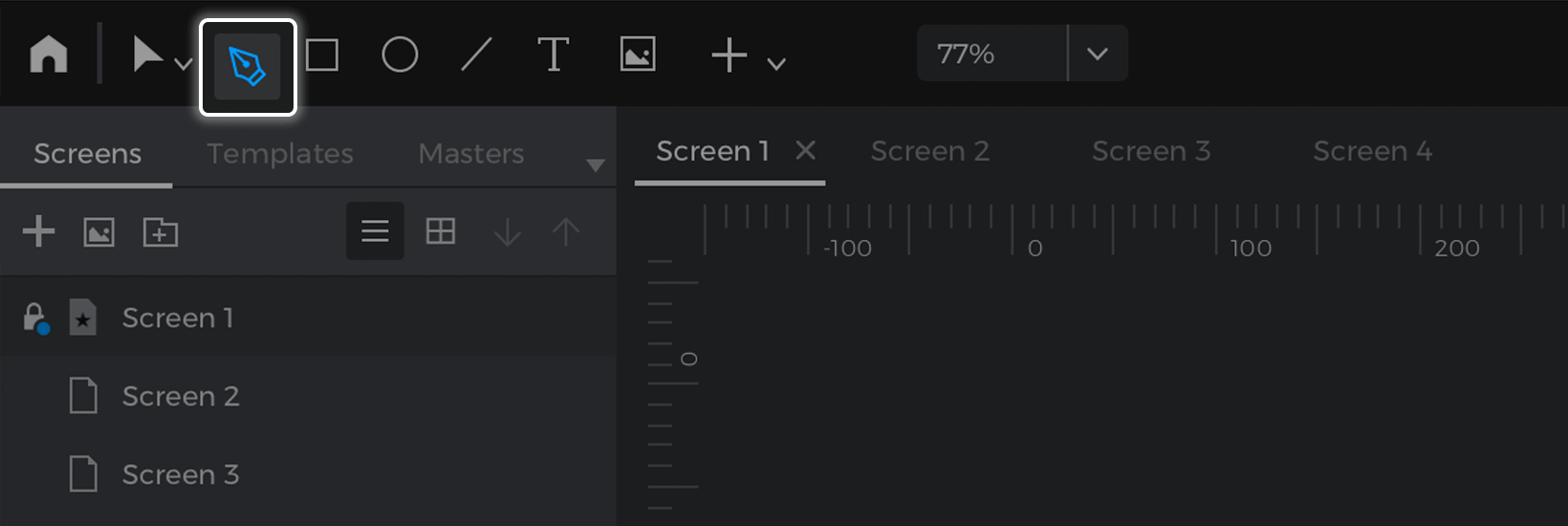
Add Images
Click on the Image element in the Toolbar or hit I to add an image to your prototype. Choose an image in the file browser or drag an image from your desktop to place it on the Canvas.
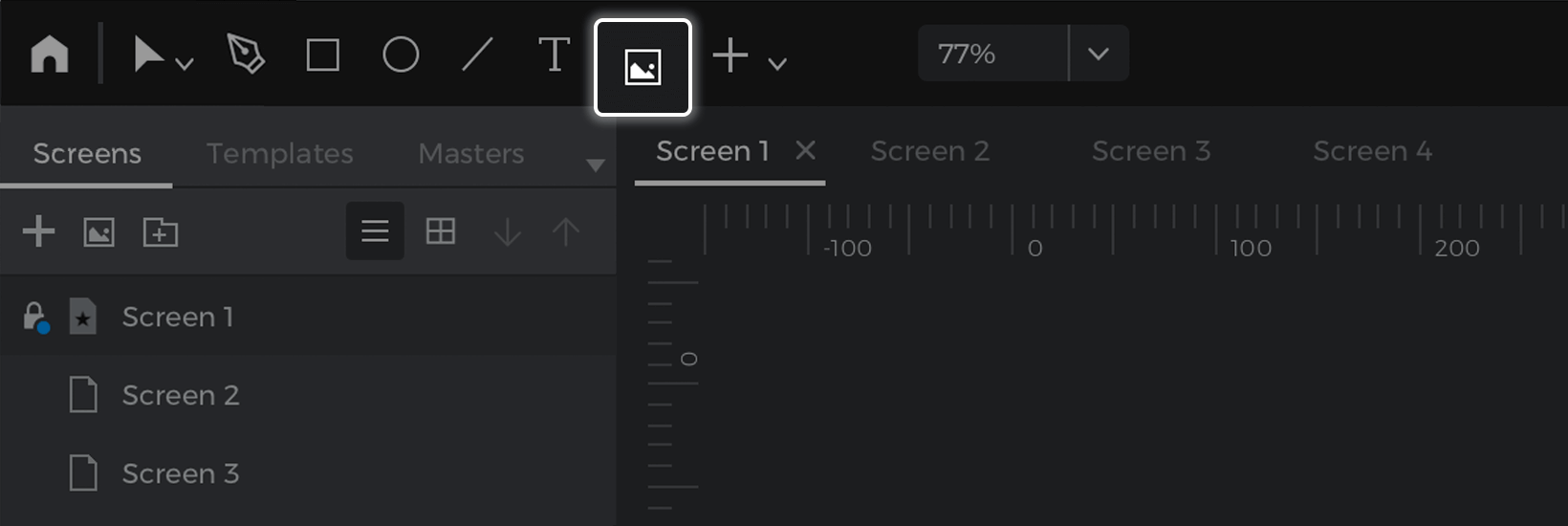
Add interactive Inputs
Justinmind's pre-made Input widgets are automatically interactive. You can type into Input Text Fields, select values from Dropdowns, tick Check Boxes, and much more without adding any events.
Place any widget from the 'Interactive Input Fields' section of the Toolbar on the Canvas and simulate your prototype to check it out.
Add another Screen
Head over to the Screens palette, where you can find a list of all the screens in your prototype. Click the '+' button to add a new screen.
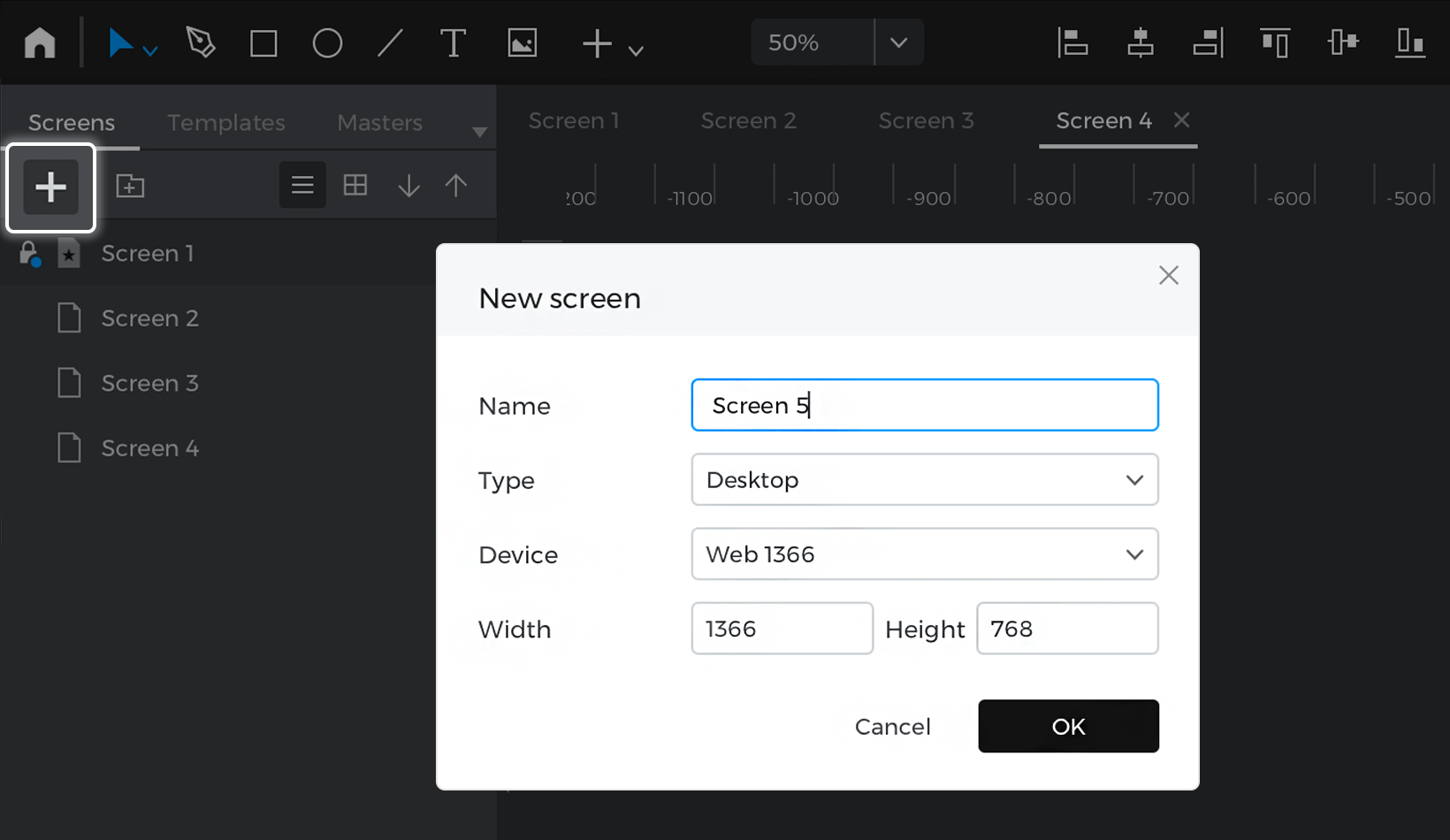
Double click on a screen in this palette to rename it.
Click on a screen in the Layers palette or double click on the Canvas to find options to change the Canvas size, device type, and screen background color.
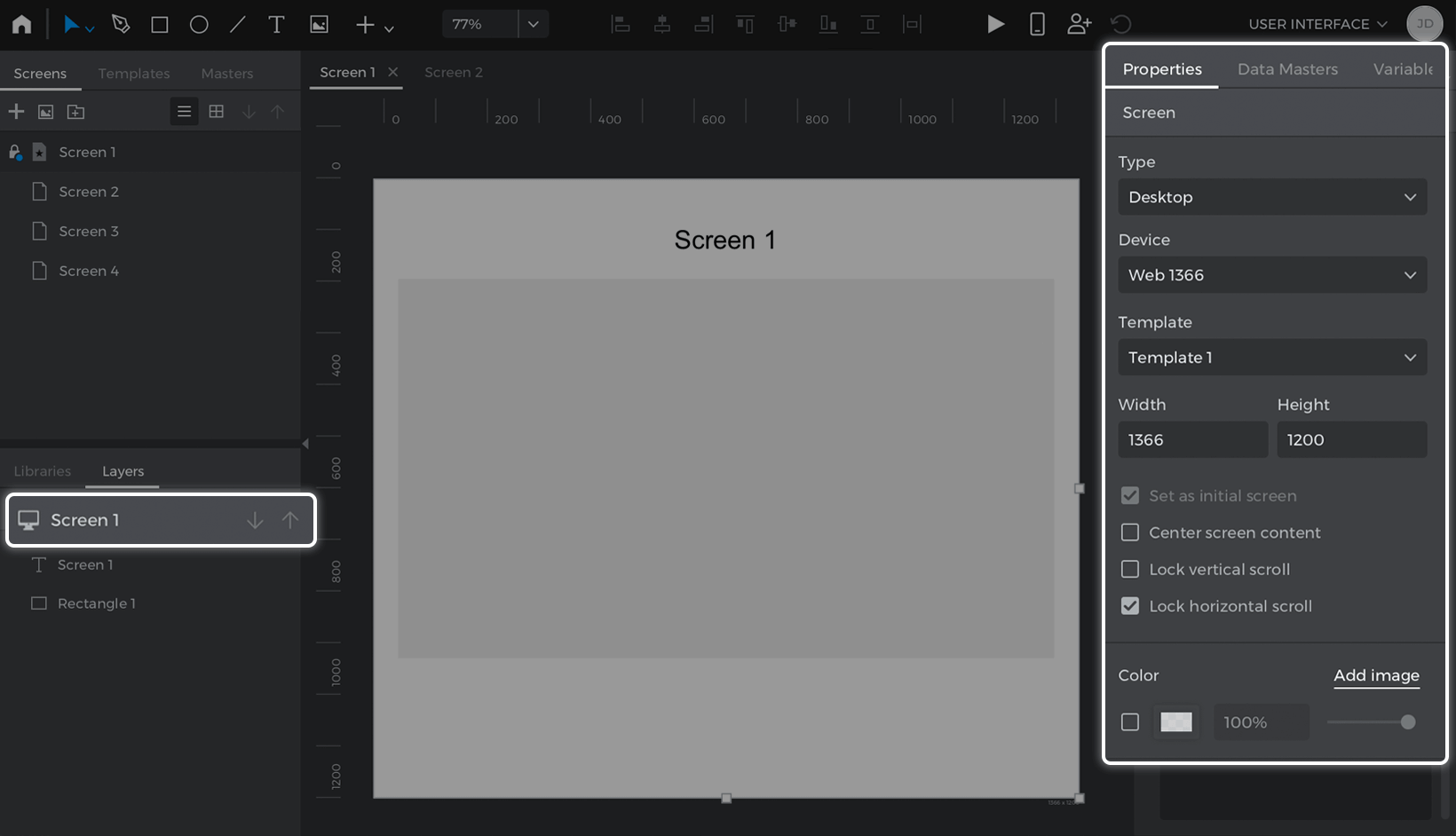
Add links and clickable elements
Navigate to other screens while previewing your prototype by adding interactive links. You can create links in three different ways:
Note: you'll need at least two screens to create links between them.
- Drag and drop: Select an element on the Canvas you'd like to link to another screen. Then, drag it to the Screens palette and to a screen you'd like to link to. This will create an On Click + Navigate To event automatically.

- Right-click: Select an element you'd like to link to another screen, right-click on it, and select Navigate To in the pop-up. You can then choose a screen to link to and whether or not to include a transition effect with the link.
- The Events palette: Select an element you'd like to link to another screen, go to the Events palette, and click 'Add Event'. In the Events dialog, click on the 'Choose Trigger' dropdown, hover over the Mouse section, and choose an On Click trigger.
You'll see the 'Action' dropdown next. Click on it and pick Navigate To. Finally, select a screen to link to from the list that appears below and click 'OK' to finish building the event.
In the Events dialog, you can also choose to link to the previously viewed screen in your prototype or an external URL.
Simulate your prototype
Check out your prototype's interactivity in real-time by simulating. Click the 'Play' button or hit F5 to launch the simulation viewer in a browser.
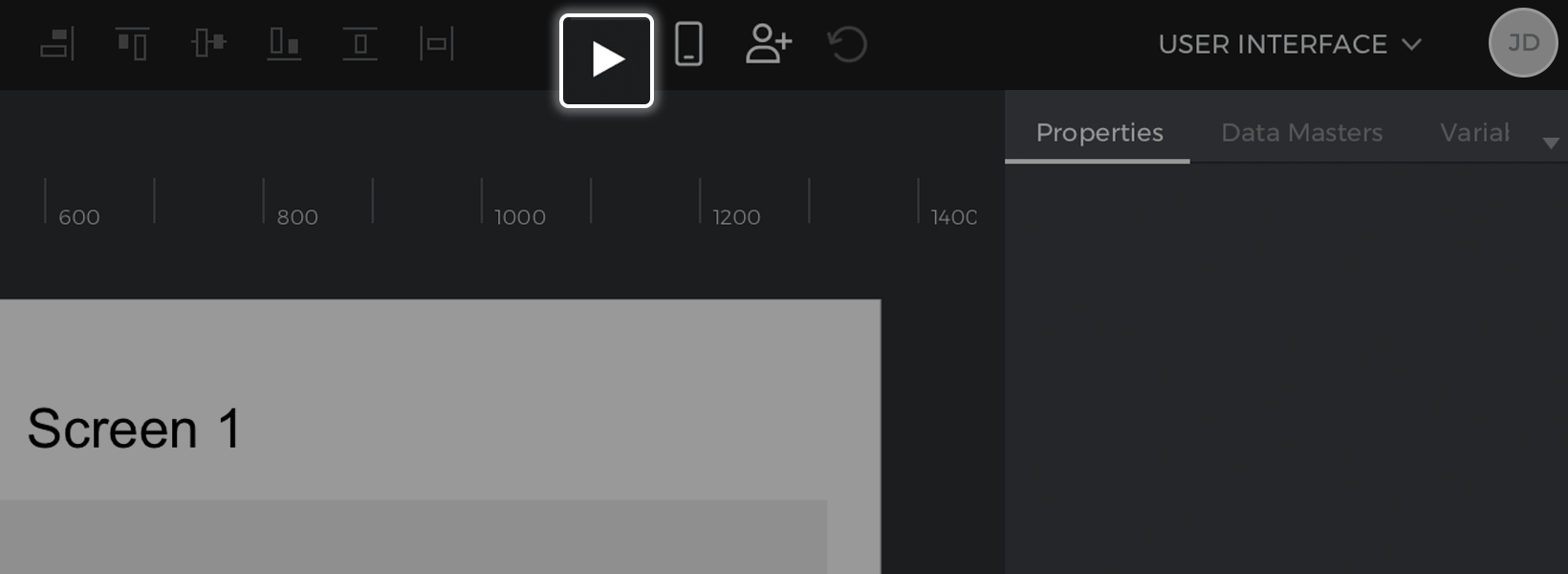
You'll find a top bar in the viewer where you can manually navigate through the prototype as well as change the Canvas size. Close or minimize the simulation window to return to the editor.
Share and get feedback from reviewers
Share your prototypes and get feedback from clients and colleagues by inviting them as prototype reviewers. They'll be able to view, interact with, and leave comments on your prototype's screens and UI elements for free: no Justinmind account needed. Here's how:
- Click the 'Share' button near the top of the editor.

- Place your prototype in an existing project or create a new one.
- Tap 'Share' to upload your prototype to your online account. You'll see a confirmation dialog when your prototype has been successfully published.
- Click 'View in my account', which will launch a browser loaded to the prototype in your Justinmind online account.

- Tap the 'Invite reviewers' button, which will open a pop-up where you can enter in reviewers' email addresses and write any instructions or comments for them.

- Click 'Send invitations' to invite reviewers. They'll receive an email containing a link to the interactive prototype.
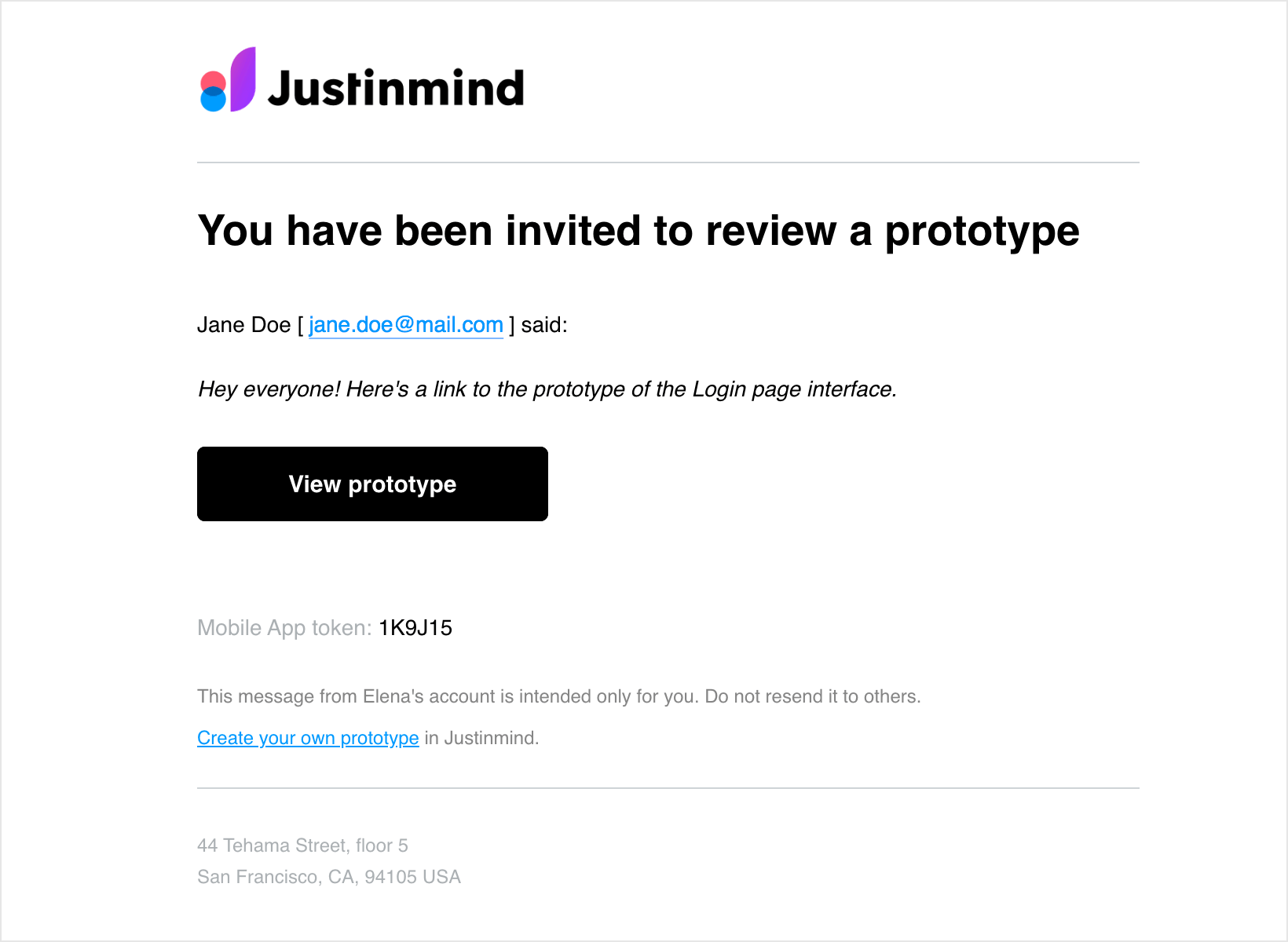
Reviewers can easily add comments to your prototype by switching to Comment Mode in the top bar.
Depending on your notification settings, you'll receive an email when a reviewer has left a comment on your prototype.
Simulate a prototype on a real device
Preview the look and feel of your prototypes on a real device using Justinmind's mobile app.
Prototype creators
- Download and install the Justinmind mobile app, which you can find in the Apple App Store or Google Play Store.
- After installing, open the mobile app and sign in with your Justinmind account details. You'll then see a list of prototypes you've shared to your Justinmind online account.
- Tap on a prototype to view it. Prototypes with a red dot need to be downloaded before you can view them – just tap on them to start the download.

Prototypes on your device have all the interactivity you defined in the Justinmind editor.
Prototype reviewers
Reviewers and clients can view and interact with your prototypes on their mobile devices as well. They can do so in two ways:
- The Justinmind mobile app: Reviewers can download and install the Justinmind app, tap 'Introduce token' at the bottom of the screen in the app, and enter the token they received via email when they were invited to review the prototype.
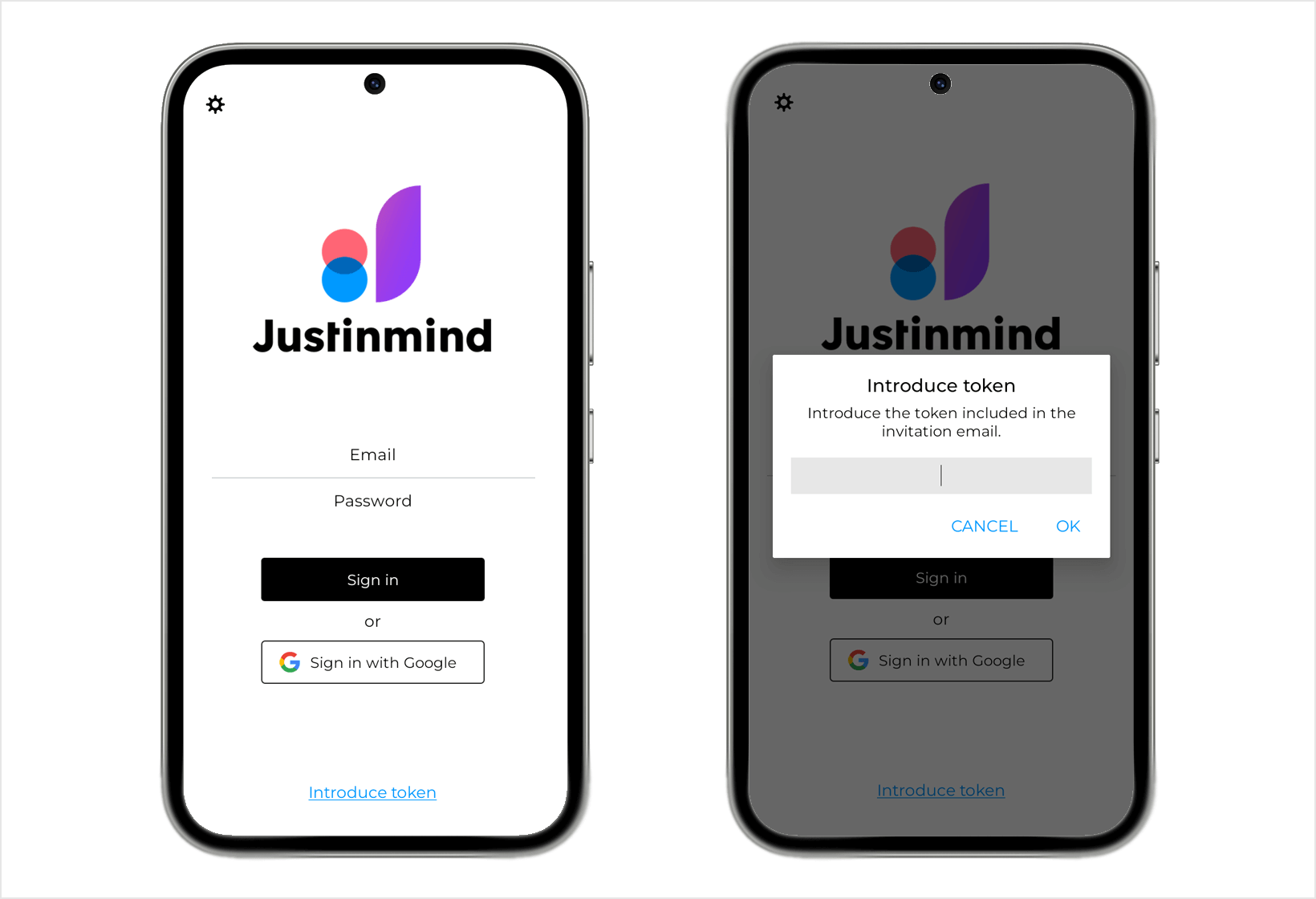
- In a mobile browser: Reviewers can tap on the prototype link you share with them, which will load the prototype simulation in their mobile browser.
Design Web App In Just In Mind
Source: https://www.justinmind.com/support/start-prototyping-web-and-mobile-apps/
Posted by: calderaconere.blogspot.com


0 Response to "Design Web App In Just In Mind"
Post a Comment